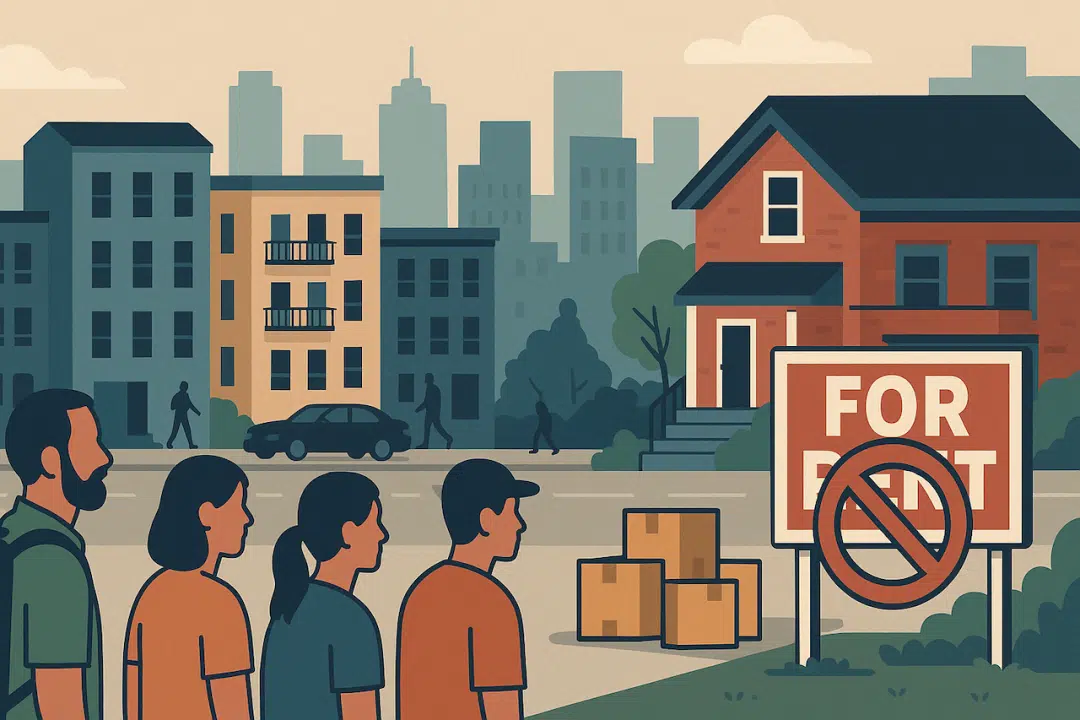The red-hot rental market is squeezing out more than just prospective homebuyers—it’s pushing landlords away from Section 8. Across the U.S., property owners are exiting the Housing Choice Voucher Program at alarming rates, choosing instead to pursue higher-paying tenants in the private market.
For low-income renters, the result is devastating.
Housing demand soars—voucher acceptance drops

Rents have surged in most regions throughout 2024 and into 2025, especially in urban and suburban areas where housing inventory remains low. With demand high and units scarce, landlords no longer see the need to accept Section 8, which comes with federal oversight, inspections, and capped rent rates.
“I had 30 applicants in one day,” said a landlord in Syracuse, New York. “Half of them offered over asking—cash in hand. I don’t need to wait for a voucher to clear anymore.”
That sentiment is echoed in cities like Rochester, Buffalo, and Albany—where Section 8 recipients are increasingly reporting that even with a voucher in hand, they can’t find a landlord who will take it.
Landlord participation in Section 8 is declining
A report from HUD shows a steady decline in landlord participation in voucher programs, despite the growing need for affordable housing. In some states, landlord exits have outpaced new program enrollments for two consecutive years.
And in places without source of income discrimination laws, landlords can legally reject tenants simply for having a voucher.
Vouchers don’t stretch far in today’s market
Another issue is the gap between fair market rent (FMR) and what landlords can get on the open market. Many voucher programs are capped below what private renters are willing to pay, especially in fast-growing regions.
For example, in Monroe County, New York:
- FMR for a 2-bedroom unit: $1,115/month
- Average private market rent: $1,450/month or more
Even with HUD’s expanded payment standard flexibility (as noted in this update), the gap is often too wide to keep landlords engaged.
Pressure grows on families with vouchers
Without more landlords accepting vouchers—or incentives to bring them back—recipients risk losing assistance altogether. Most vouchers expire within 60 to 120 days if unused, leaving families without recourse.
“It’s not that Section 8 doesn’t work,” said an advocate from the Legal Aid Society. “It’s that the housing market has moved faster than the system can respond.”
Some local housing authorities have tried offering sign-on bonuses or damage mitigation funds to attract landlords, but results have been mixed.
What could help?
Experts suggest several steps to reverse the trend:
- Expanding source of income protection laws at the state level
- Increasing payment standards to reflect market conditions
- Offering faster inspection turnaround times
- Creating landlord incentive programs at the county level
Until then, the housing crisis will continue to hit the most vulnerable hardest—those who’ve done everything right, qualified for assistance, and still can’t find a place to live.
For more:
- How to Qualify for Section 8 in 2025
- New HUD Rule Aims to Boost Portability
- Section 8 Scams: What to Watch For
Related Reading
Want to check out more from FL1? Check out these related topics!
- Your Life, Your Money
- Stimulus Check News
- DOGE News
- Food Stamps & SNAP News
- Social Security News
- SSA Cost of Living Adjustment News
- IRS News
- Child Tax Credit News
- Latest from Congress
- Gas Prices
- Medicaid
- Medicare
Stay informed. For the latest breaking news and headlines from across the FL1 National Desk subscribe using the Google pop-up prompt or download the FingerLakes1.com App!

